Miki City is situated in south-central Hyogo Prefecture, northwest of Kobe City. Renowned as Japan’s oldest “town of blacksmiths,” it thrives as a metalworking region. “Banshu-Miki Uchihamono (Banshu-Miki Forged Blades)” are designated as traditional “Crafts of Japan” and include saws, planes, chisels, trowels, and small knives.
The origins of this craft can be traced back to the siege of Miki Castle (1578-1580) by Hashiba Hideyoshi, later known as Toyotomi Hideyoshi. Following the capture of Miki Castle, ruled by Nagaharu Bessho, Hideyoshi initiated a tax exemption policy to aid in the extensive reconstruction of Miki City, which had suffered significant damage. In response, there was an influx of carpenters and blacksmiths who crafted their tools, playing a crucial role in the restoration of temples and houses that had been burned to the ground. The scheme also sought to bring back residents who had scattered to different regions.
As reconstruction progressed and the town of Miki came back to life, the demand for carpentry work diminished. Carpenters began to move away to seek employment in places like Kyoto and Osaka. Subsequently, the tools they brought with them gained a reputation for quality, contributing to the recognition of Miki as a blacksmithing town of high regard.
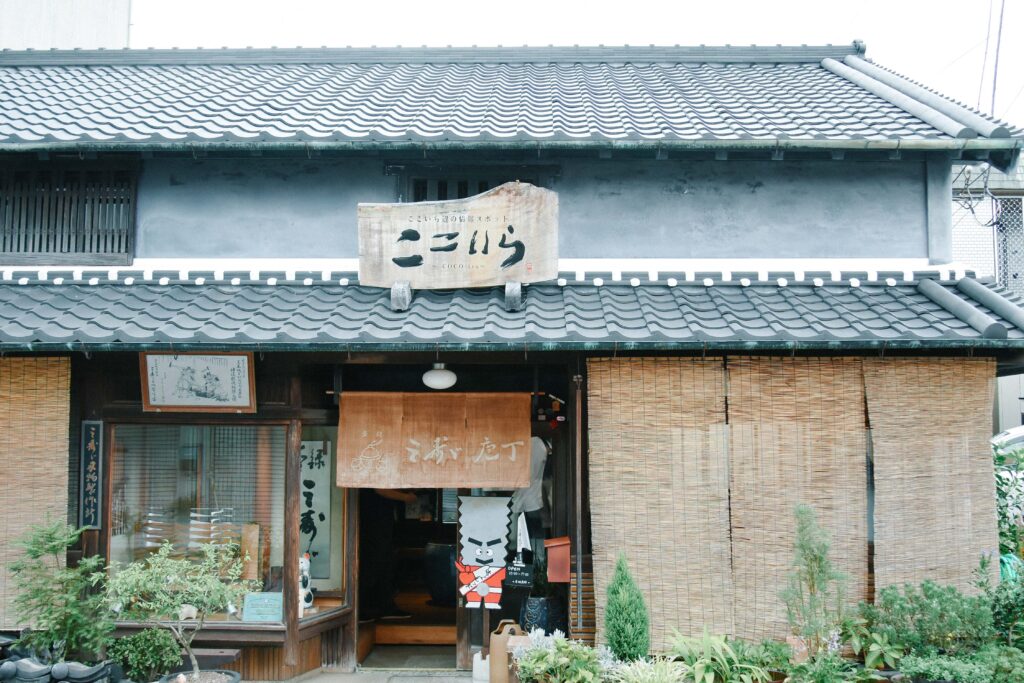
In 2019, 13.8% of Miki City’s total industrial product shipments consisted of metal goods. Additionally, Miki’s hand-pulled saws, a specialty of Miki Metalwork, held a nationwide market share of 12.9%.
Through repeated technological innovation, a wide range of metal products are now developed and manufactured, from carpentry tools to tools for metalworking and construction.
Carrying on the traditions cultivated over this long history, Misuzu Hamono specializes in the production of kitchen knives. With expertise in the art of sharpening blades, they manufacture and sell knives tailored to a wide range of culinary uses, from premium tools for specialist chefs to general-purpose knives suitable for both restaurants and homes.
Yamato Miyawaki is the 3rd-generation proprietor of Misuzu Hamono.
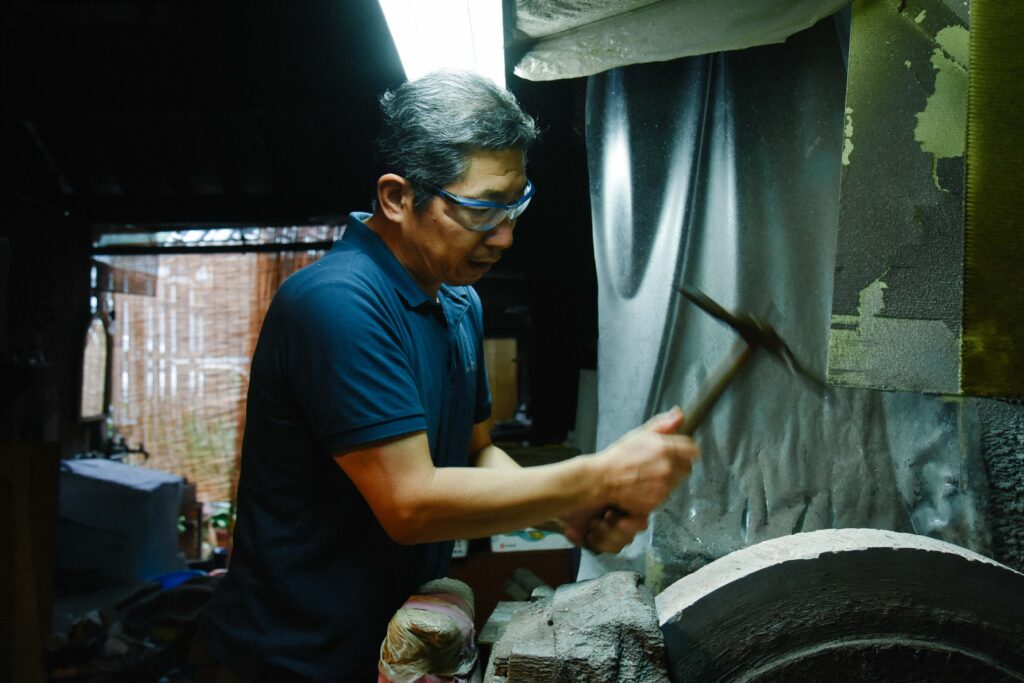
While working for the agency, he assisted with sales at the annual “Miki Hardware Festival” but had never worked as a cutlery sharpener. When his predecessor became ill and it became difficult for him to continue his work, Mr. Miyawaki began thinking about taking over the business to ensure the survival of Misuzu Hamono.
However, Mr. Akira Suzuki, who understood the difficulties of sustaining a business as a knife manufacturer, did not allow him to take over. So, without telling him, Mr. Miyawaki volunteered to work for a knife manufacturer in Osaka, with whom he had a business relationship, to learn the fundamentals of knife-making and sharpening. Applying that knowledge, he began to take on the re-sharpening of knives brought in by local residents, gradually gaining experience.
「I left the company in May 2005, and my predecessor passed away in October of the same year, so I hardly learnt anything technical from him. Until the very end, I wasn’t allowed to take the reins but once when I was told, ‘Show me the knife you’ve sharpened,’ and I brought it to him, he said, ‘Well, you’ve done a good job.’ It was just a one-time exchange, but that really encouraged me.」
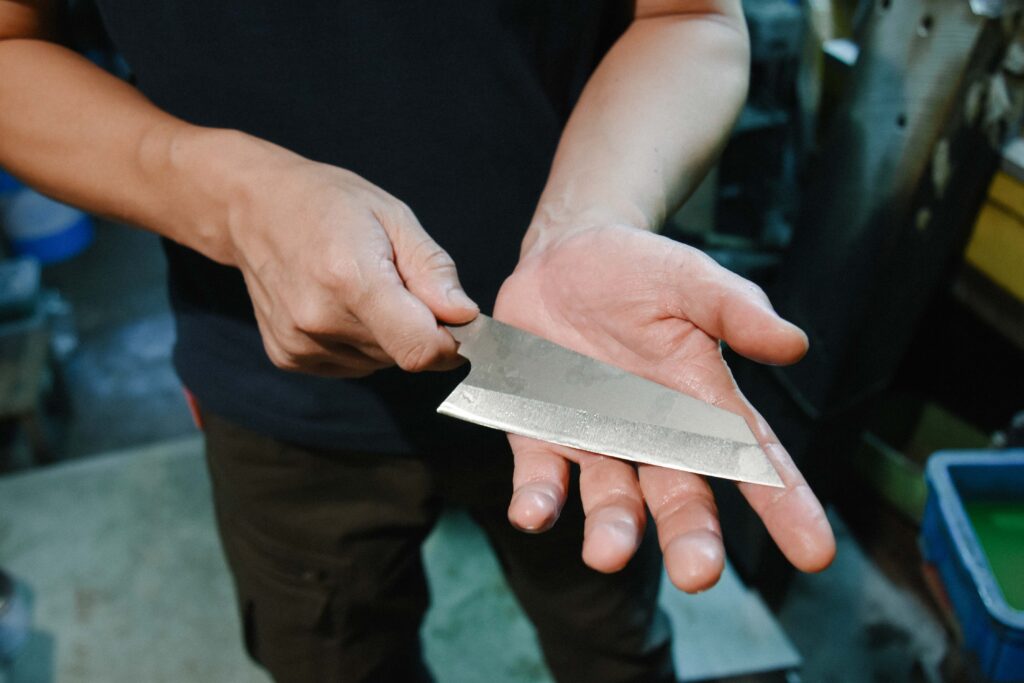
Misuzu Hamono has been crafting “stainless steel Warikomi” blades since its founding. The manufacturing technique involves “encasing” a steel core between layers of stainless steel, creating a knife that ensures exceptional cutting performance but also rust resistance. They were the first company in Japan to adopt “stainless steel Warikomi” for their knives, which is now popular with many people and widely manufactured.
「The structure of a ‘stainless steel Warikomi’ knife is the same as that of a pencil. If you use only the lead, it will break easily, so by ‘sandwiching’ the steel between the stainless steel, just like wrapping the pencil lead with wood, you can make the steel harder. Previously, knives were often made by sandwiching the steel between soft iron, but by using stainless steel, we were able to create knives that could be beautifully polished.」
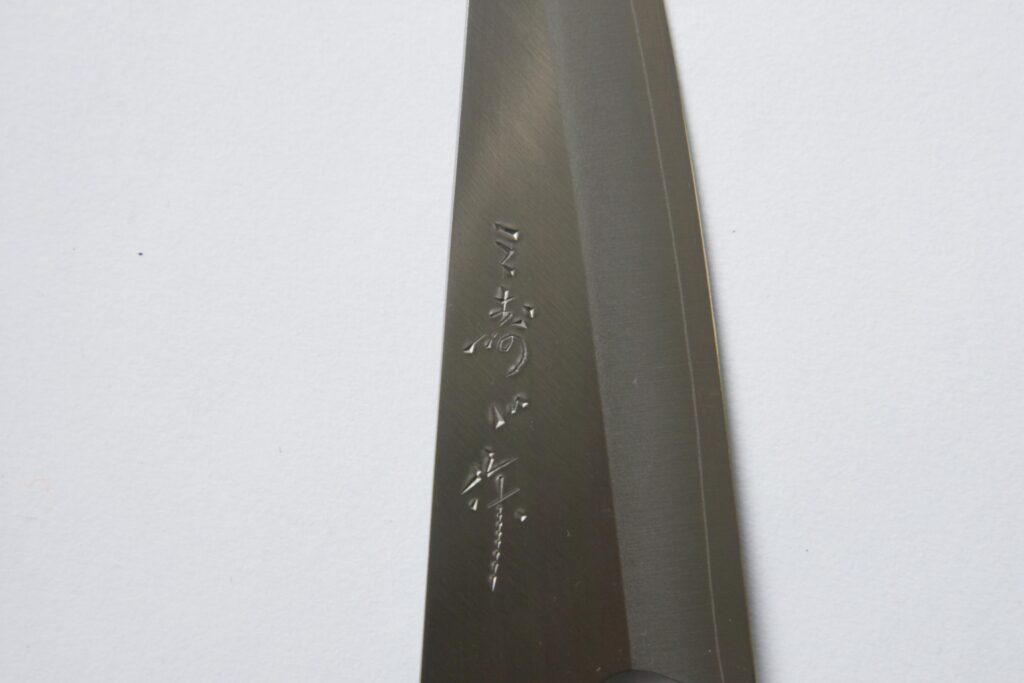
Mr. Miyawaki and Trunk Design representative, Yasuhiro Horiuchi, first met in 2015 at a metalworkers conference in Akashi City.
「It’s often when people see our knives first hand, that they comment ‘I’d really like to purchase these from you.’ But Mr. Horiuchi showed a deeper interest in our production methods, and worked with us on how we can continue with our traditional techniques and products. It was a new and exciting experience. I felt I could trust him and I knew that I could continue making knives with the support of these people for a long time.」
Hyogo Craft manages the promotion of two types of knives made by Misuzu Hamono: the “Misuzu” knife and “Sekisou-kaji” knives (similar to Damascus pattern-welding).
The “Misuzu” kitchen knife was designed by the founder of Misuzu Hamono, Mr. Shinji Suzuki. While there are various shapes of kitchen knives, such as the “Nagiri” (for vegetables), the “Bunka” (general purpose) and “Gyutō” (similar to a Western-style chef’s knife), this knife is called the “Misuzu” knife because it has its own unique shape.
The “Misuzu” kitchen knife was created around the same time as the “Bunka” knife, a stylishly designed knife that is often used in the home.
「Unlike the nomadic hunting societies of the past, the Japanese people led a settled lifestyle, so there were many knives in each household for different purposes. After the war, the lifestyle of cutting everything with a single kitchen knife emerged in Japan. It was around that time when the founder developed the “Misuzu” model. I personally think that the design of this knife is very “Japanese”, and I love it.」
Since then, the company has evolved its materials and techniques in line with the times but has continued to manufacture the “Misuzu” knife with this design intact.
「Some families have been using the “Misuzu” kitchen knife for generations. It is especially popular among locals and serves as the flagship model for the Misuzu Hamono.」

“Sekisou-kaji” forged knives are characterized by the wavy pattern running across the blade. This pattern is created by encasing the steel between layers of stainless steel and nickel. Through forging (hammering to improve durability) and sharpening, this pattern emerges.
Within a blade thickness of 1.8mm there are 45 different layers of metal, including the steel core. It is said that stacking layers increases the “koshi” (tensile strength).
「When you have good “koshi”, it becomes easier to cut the ingredients straight. A knife with good “koshi” is easier to work with compared to a soft knife. Depending on the prepping method, there are different strengths and weaknesses, but I believe that a knife with good “koshi” is easier for everyone to work with and is well-suited for the various techniques in Japanese cooking, allowing for the use of different parts of the blade to cut ingredients.」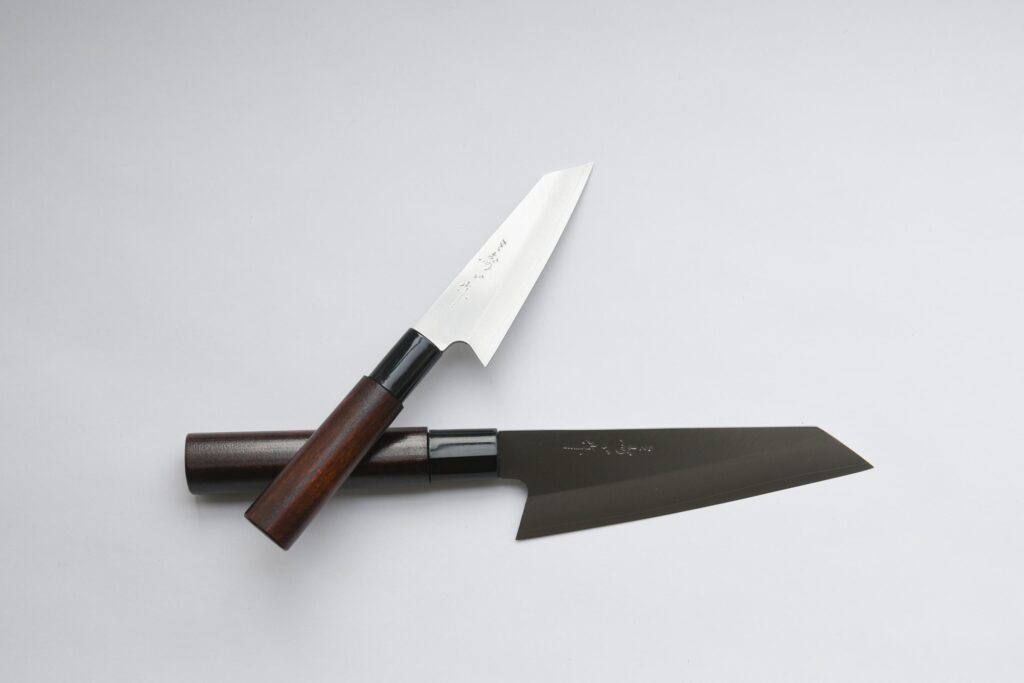
Another feature of “Misuzu” and “Sekisou-kaji” knives is the handle. Instead of securing the handle with commonly used rivets (metal fixtures), they are attached using the traditional Japanese method of inserting the tang directly into the handle.
「Most of the knives we manufacture have a traditional Japanese knife handle. Instead of metal fittings, we use a little glue and the elasticity of the wood to hold the blades in place, so they are light. We want our knives to be tools that do not tire easily, so we are particularly pursuing lightness.」
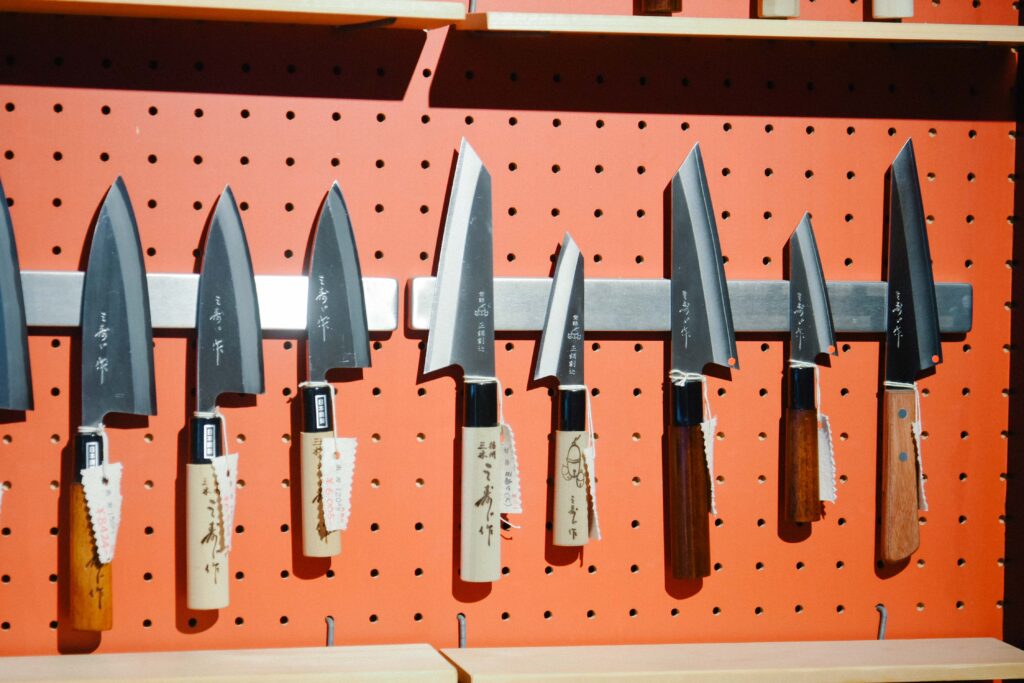
Mr. Miyawaki, who manufactures a wide range of kitchen knives, holds a cherished belief: he wishes to encourage people to use a good-quality kitchen knife for a long time. In an era where knives are readily available at affordable prices, rather than repeatedly replacing them like consumables, he wishes to convey the value of using a single knife over a lifetime.
「Western-style knives have handles secured with metal fixtures, making them durable; however, if they break, the repair costs can be high. On the other hand, Japanese-style knives with wooden handles wear out more quickly, but these handles can be easily replaced for a reasonable price. Additionally, knives can be sharpened to restore their sharpness as if they were brand new. I would be delighted if people could appreciate the joy of continuing to use their favorite knives with affection, by replacing handles or sharpening blades along the way. 」
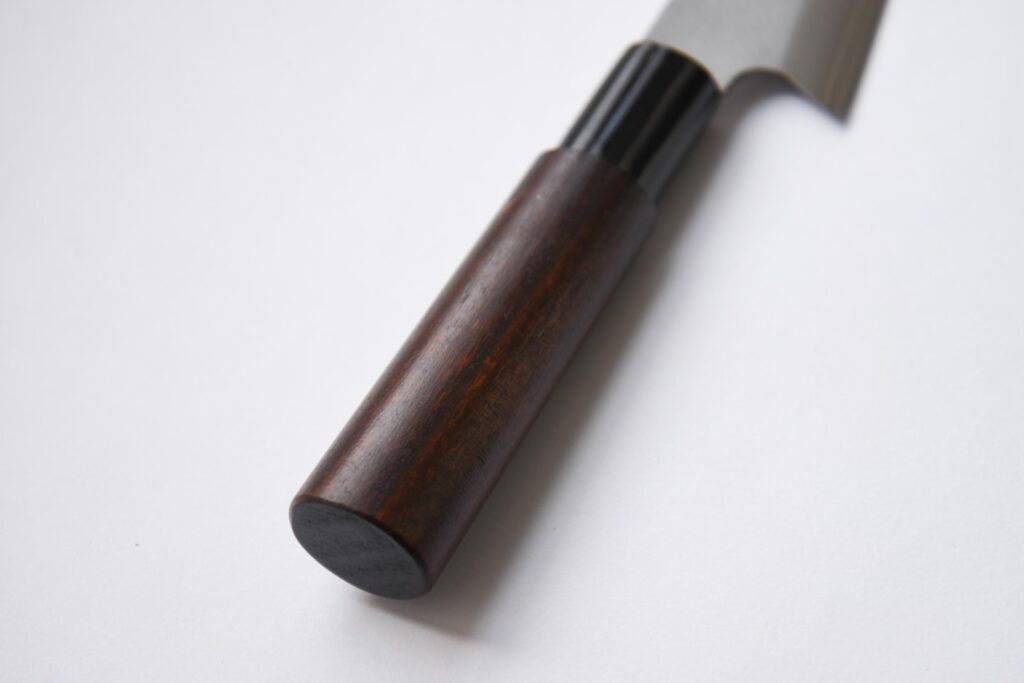
Some handles are coated with Japanese lacquer (urushi). This coating makes them both light and water-resistant
「I am currently focused on making knives and managing the company. However, looking to the future, my continued aim is to bring smiles to the faces of those sitting around the table, not just through our knives but with other crafted goods. Nowadays, recipes for dishes that can be made ‘without knives’ are popular, and perhaps, a century from now, knives might no longer exist. Nevertheless, as Misuzu Hamono continues to make knives we are also pursuing what other utensils to craft related to food that will continue to bring smiles to the people around the dinner table.」
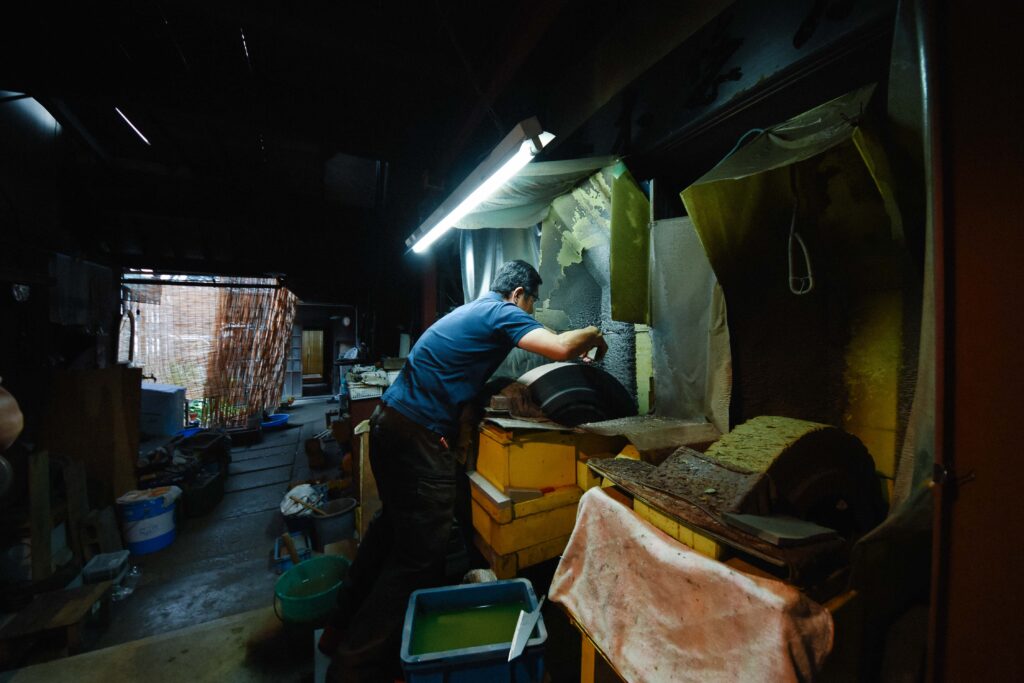
Mr. Miyawaki became a knife sharpener to keep the tradition alive. While working with knives every day, he constantly thinks about the future direction. We are very much looking forward to the future of Misuzu Hamono and Mr. Miyawaki’s craftsmanship, to see what products will be created in the future.
Direction and photography by TRUNK DESIGN Inc.
Editing: Takehiko Yanase
Text: Takumi Miyamoto